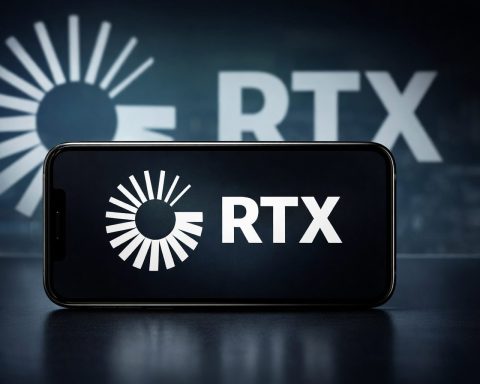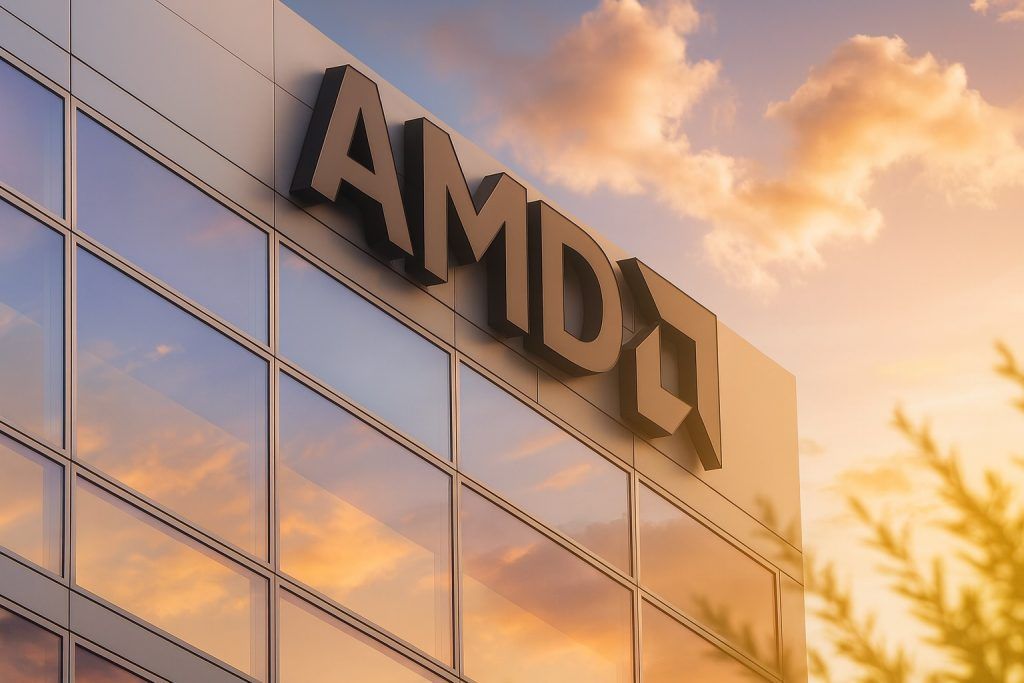- Sharp Rally: Intel’s (NASDAQ: INTC) share price has surged to roughly $38–39 in late October 2025, near a two-year high [1] [2]. The stock has doubled off its January lows, up about 85–90% year-to-date [3] [4], far outpacing both the S&P 500 (~6% YTD) and chip peers.
- Big Deals Boost: A flurry of headline partnerships has fueled the rally. In August, the U.S. government converted CHIPS Act funding into roughly a 9.9% stake (~$8.9B) in Intel [5]. Soon after, Nvidia announced a $5B investment for a ~4% stake (joint AI-chip plans) [6], and Japan’s SoftBank quietly bought about $2B of Intel stock [7] [8]. These deals (totaling ~$15B in fresh capital) have given Intel a major cash lifeline, reviving investor confidence.
- Earnings Beat: In Q3 2025 (reported Oct 23), Intel beat profit estimates and returned to profitability. Adjusted EPS was $0.23 (vs. ~$0.01 expected) on $13.7 billion revenue (up 3% YoY) [9]. Gross margins hit ~40% (well above estimates) and the company swung to a GAAP profit (roughly $4.1B) versus a huge loss a year ago [10] [11]. Management called it “steady progress,” noting AI-driven demand for PCs and servers; CFO Dave Zinsner quipped that Intel has a “high-class” problem of demand outstripping supply [12] [13]. Intel guided Q4 revenue around $12.8–13.8B and EPS ~$0.08 [14] (in line with consensus).
- Wall Street Caution: Despite the hype, analysts remain skeptical. The average 12-month price target is only about $26–30 – roughly 20–30% below current levels [15] [16]. Many firms rate INTC a Hold or Sell: e.g. HSBC cut to “Reduce” and Bank of America to “Underperform,” warning Intel has run “too far, too fast” [17] [18]. Bullish outliers exist (UBS at $40, TipRanks ~ $43 [19] [20]), but most data providers note the consensus rating is closer to “Reduce” [21].
- Competitive Landscape: Intel’s rally comes as rivals dominate the AI boom. NVIDIA now controls ~90% of datacenter AI chips and just surpassed a $1 trillion market cap [22] [23]. AMD’s stock has also soared (hitting roughly $240 in October, about +80% YTD) on its own AI and server wins [24] [25]. By contrast, Intel’s market value (~$175 B) is only about half AMD’s and far below Nvidia’s [26] [27]. Even Qualcomm and others are pivoting to AI chips. Meanwhile, foundry leaders TSMC and Samsung benefit from booming demand – TSMC just raised its 2025 revenue growth target to the mid-30% range on strong AI orders [28] [29].
- Market Context: The entire semiconductor sector is riding an “AI supercycle.” Global chip sales are projected to hit a record ~$697 billion in 2025 (amid massive spending on AI, 5G and cloud) [30]. Major deals (e.g. OpenAI with Nvidia/AMD/Broadcom) aim to build over $1 trillion in data-center capacity [31]. Fed-driven macro factors also play in – for example, cooling inflation in late Oct 2025 lifted tech stocks broadly.
Stock Performance and Recent Trends
Intel’s share price has been volatile but rising sharply. After stalling near a 52-week high around $39.65 in mid-October, INTC closed at ~$38.2 on Oct. 23 [32]. That day’s +3.4% jump brought the year-to-date gain to ~85–90% [33] [34]. Traders note an October “golden cross” (50-day moving average crossing the 200-day up), a bullish technical signal [35] – though momentum indicators (like RSI) warn the rally may be overextended. Over the last month, the stock has pulled back about 10% from its early-October peak, but buyers have defended the mid-$30s as support [36].
Internally, Intel has been trimming costs and refocusing on core chips. CEO Lip-Bu Tan (a veteran chip investor tapped in March 2025) has cut over 20% of Intel’s workforce and shed non-core assets. He has also revamped Intel’s chip design group to streamline R&D. These measures, along with the $15B+ funding from government and partners, have markedly improved Intel’s finances. As Ben Bajarin of Creative Strategies observes, Intel “has turned a corner and is steadying the ship,” calling the combination of cost cuts and fresh funding “a strong setup for 2026” [37].
Strategic Deals Fueling Investor Optimism
Investors bid up Intel on unprecedented partnerships and capital infusions. In late August, Congress approved converting roughly $8.9B of CHIPS Act subsidies into a 10% equity stake in Intel [38]. This U.S. government lifeline – part of a push to onshore chip production – was historic. Shortly thereafter, Nvidia agreed to invest $5B in Intel (getting ~4% ownership) and jointly develop new CPU+GPU products [39] [40]. Around the same time, Masayoshi Son’s SoftBank Vision Fund quietly bought roughly $2B of Intel stock [41] [42]. In aggregate, Intel now has about $15 billion committed from these partners – a massive vote of confidence. “These investments have offered a lifeline to the stock,” noted one Reuters analysis, enabling a >90% rally in 2025 [43] [44].
Rumors of further deals have kept the momentum going. Reports surfaced in October that AMD may outsource some chip production to Intel’s foundries (a reversal of roles) [45]. Others suggest Microsoft Azure could place large CPU orders, or even that Apple might take a strategic stake. (Intel’s foundry arm is actively wooing big customers.) Meanwhile, Intel has been publicizing new chip products: this month it previewed “Panther Lake” AI CPUs for laptops and “Clearwater Forest” AI-optimized server chips [46]. All these headlines have kept Intel in the spotlight as a turnaround story.
Q3 Earnings Highlight Turnaround Signs
Intel’s Q3 report (late Oct 23) delivered clear upside surprises. The company posted $13.7 billion in revenue and $0.23 in adjusted EPS [47] – beating consensus of ~$13.1B and ~$0.01 EPS. This swung Intel back to an adjusted profit (versus a breakeven/fractional loss expected) and drove a sizable after-hours rally. The results were aided by one-time gains (e.g. the recent sale of most of its Altera FPGA business) and aggressive cost cuts. Notably, Intel’s adjusted gross margin was about 40%, well above the ~35.7% expected [48] [49].
Management painted the quarter as a validation of the turnaround plan. CEO Tan called the progress “steady” and said AI demand is creating “attractive opportunities” for Intel [50]. CFO Zinsner noted that demand outstripped supply, terming it a “high-class problem.” He also stressed that the recent funding from Washington, NVIDIA and SoftBank has fortified Intel’s balance sheet, enabling the company to “outpace supply” with chip production into 2026 [51] [52]. In effect, Intel is using Q3 to “shore up its finances” with this cash infusion.
Intel gave relatively cautious guidance for Q4: revenue of $12.8–13.8B (midpoint ≈$13.3B) and non-GAAP EPS around $0.08 [53]. These figures are roughly in line with analyst forecasts, implying modest sequential growth. Company leaders emphasize that the AI-driven upgrade cycles for PCs and servers remain strong, and that upcoming products (new CPUs, GPUs and accelerated processors) are being shipped now. On the earnings call, analysts noted that Q4 guidance reflects expectations of continued improvement, but still depends on execution and healthy end-market demand.
Analyst Commentary and Forecasts
Market commentators are divided on what comes next. Michael Schulman, CIO of Running Point Capital, pointed out that investors latched onto multiple positives in Q3: “better-than-feared guidance… visible cost and gross margin progress, AI-PC buzz, and $15B of fresh strategic funding” [54]. He credited these factors for Intel’s share pop. Ben Bajarin (Creative Strategies) concurs that Intel has strengthened its position: Intel “has turned a corner and is steadying the ship,” he said, noting that the cost cuts plus new capital “set up” Intel well for 2026 [55]. Even CNBC’s Jim Cramer lauded CEO Tan as a “legendary semiconductor investor” for orchestrating the deals that sparked the rally [56].
Yet many on Wall Street warn of moderation. Bank of America’s chip analyst reiterated an “Underperform” rating, saying INTC has “run too far, too fast” without visible earnings to match [57]. HSBC’s team cut Intel to “Reduce,” pointing to execution risk and competition. The average analyst price target is only about $26–30 [58] (well below today’s ~$38), implying roughly 25–30% downside from current levels. Some note that Intel’s valuation is unusually high: forward P/E is ~71×, versus ~30× for NVIDIA and ~40× for AMD [59]. In short, bears say the stock is “deal-driven” and the company still must prove its technology roadmap (especially new 18A-node chips and foundry ramp) to justify the price [60] [61].
Short-term outlook: Options markets reflect expected volatility – a large move (~±10%) was priced in around the Q3 earnings release [62]. In the days after the report, INTC rallied toward the low-$40s (pre-market Oct 24) before settling back. Traders see support in the mid-$30s (Oct lows), meaning a pullback there is possible if profit-taking sets in [63].
Long-term forecast: The path forward is split. Pessimists point out Intel has lost ground over years and must close technology gaps; they worry the foundry and GPU plans won’t come quickly enough. Optimists highlight that Intel now has ~$15B of “dry powder” plus a solid base of installed CPUs to cross-sell new chips. Creative Strategies’ Bajarin calls the setup “strong for 2026” [64]. Some Wall Street bulls (e.g. UBS) have targets in the $40s if Intel wins new foundry customers, while others stay conservative below $30.
Competition and Broader Tech Context
Intel’s comeback bid unfolds in a hyper-competitive AI/semiconductor race. NVIDIA remains the clear AI leader with its GPUs; it just traded above $1T market cap [65]. AMD is also riding the AI wave, securing contracts with OpenAI, Oracle and others – the stock recently hit all-time highs (~$240) and is up ~80% this year [66] [67]. Qualcomm, Broadcom, and even some smartphone chipmakers (armed with new AI accelerators) are all gaining on surging demand.
Meanwhile, global chipmakers and industry outlook are bright. Taiwan’s TSMC (Intel’s foundry rival) reported record profits and raised 2025 revenue guidance to mid-30% growth, citing “very strong” AI orders [68]. The semiconductor equipment sector (ASML, etc.) likewise benefits. In sum, tech markets are buoyed by the generative AI boom and easing inflation, but some caution the frenzy might overshoot (echoing bubble talk from late 2023).
For Intel, the question is whether it can turn hype into sustainable results. If Q4 2025 continues to show revenue gains and improving profitability (as Fed rate pressures ease), bulls will point to Intel’s strategic pivot succeeding. If not, the doubters will say the stock ran ahead of reality. But for now, Intel’s stock stands at multi-year highs, driven by AI excitement and unusual external support, making it one of the year’s most talked-about tech stories [69] [70].
Sources: Recent financial news and analysis (Oct 2025) including Reuters, TechStock²/ts2.tech and related tech and markets reports [71] [72] [73] [74]. All data cited are as of Oct 25, 2025.
References
1. ts2.tech, 2. ts2.tech, 3. ts2.tech, 4. ts2.tech, 5. ts2.tech, 6. ts2.tech, 7. ts2.tech, 8. ts2.tech, 9. ts2.tech, 10. ts2.tech, 11. www.reuters.com, 12. ts2.tech, 13. www.reuters.com, 14. ts2.tech, 15. ts2.tech, 16. ts2.tech, 17. ts2.tech, 18. ts2.tech, 19. ts2.tech, 20. ts2.tech, 21. ts2.tech, 22. ts2.tech, 23. ts2.tech, 24. ts2.tech, 25. ts2.tech, 26. ts2.tech, 27. ts2.tech, 28. www.reuters.com, 29. ts2.tech, 30. ts2.tech, 31. www.reuters.com, 32. ts2.tech, 33. ts2.tech, 34. ts2.tech, 35. ts2.tech, 36. ts2.tech, 37. ts2.tech, 38. ts2.tech, 39. ts2.tech, 40. ts2.tech, 41. ts2.tech, 42. ts2.tech, 43. ts2.tech, 44. www.reuters.com, 45. ts2.tech, 46. ts2.tech, 47. ts2.tech, 48. ts2.tech, 49. www.reuters.com, 50. ts2.tech, 51. ts2.tech, 52. www.reuters.com, 53. ts2.tech, 54. www.reuters.com, 55. ts2.tech, 56. ts2.tech, 57. ts2.tech, 58. ts2.tech, 59. ts2.tech, 60. ts2.tech, 61. ts2.tech, 62. ts2.tech, 63. ts2.tech, 64. ts2.tech, 65. ts2.tech, 66. ts2.tech, 67. ts2.tech, 68. www.reuters.com, 69. ts2.tech, 70. ts2.tech, 71. ts2.tech, 72. www.reuters.com, 73. ts2.tech, 74. ts2.tech







